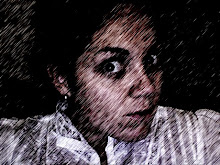... Our risk perception system, which blends thinking and feeling and mostly takes place subconsciously, often produces fears that fly in the face of the facts. Many of us are more afraid of some risks — like mercury or pesticides or genetically modified food — than the evidence warrants. And many of us aren’t as concerned about some really dire dangers as we ought to be, like climate change, particulate pollution or acidification of the ocean. The problem is, being too afraid, or not afraid enough — a phenomenon I call “the perception gap” — produces dangers all by itself. For that reason, it’s worth exploring just why our fears don’t match the facts, as a first step toward protecting ourselves from the real dangers that arise when we get risk wrong.
Some of us, ahem, miiiiight have mothers and grandmothers who routinely display (or displayed) bold illustrations of this perception gap.
And it miiiiight be influencing our own daily fears, and is worth thinking about - either doing more research and less seeking of validation, as Ropeik suggests, but also, for me, being aware of the very real consequences of long-term low-level stress, and long-term low-level fight-or-flight decision-making.
Food for thought... 'tis better to make peace with my daily choices and live calmly, than to warmly welcome my existing facts-and-feelings perception gaps, nurturing them to my own detriment...
